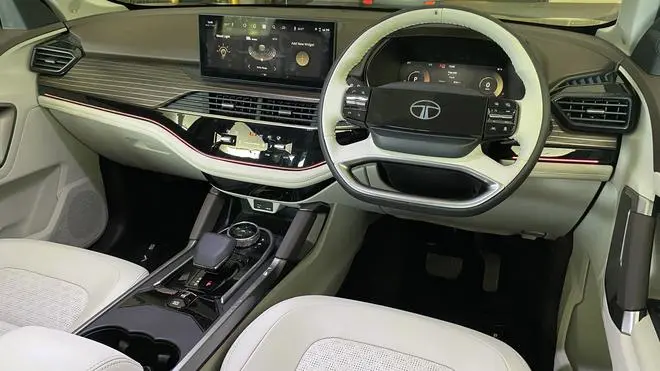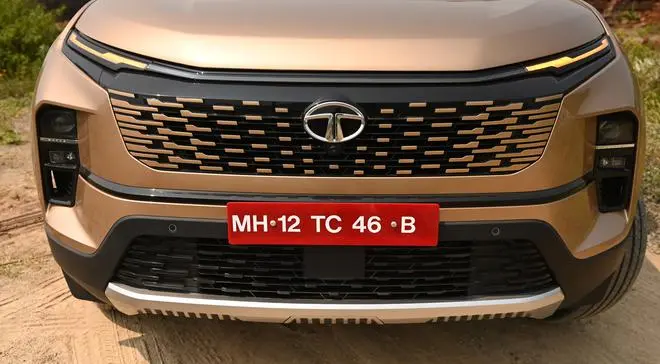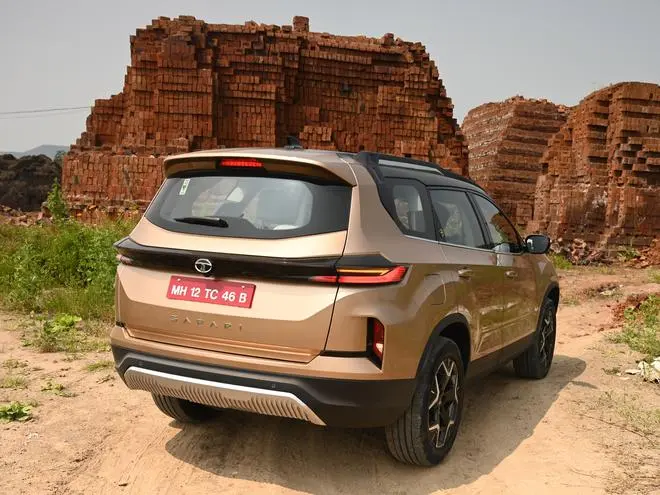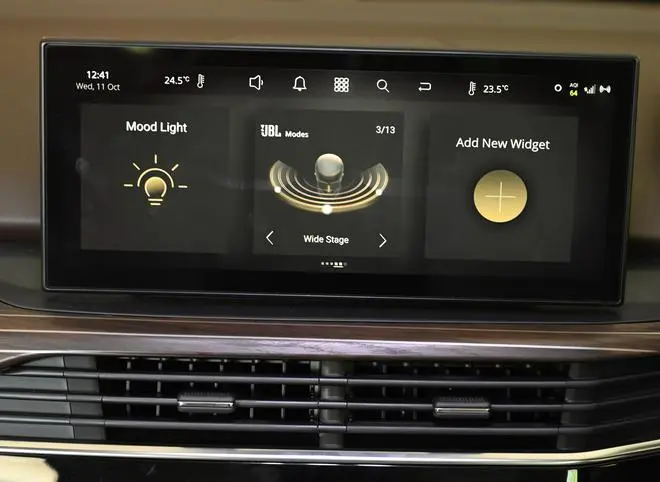Tata Motors is on a roll, executing aggressive plans for revamping and repositioning its sports utilities. The first facelifts we unveiled with the Nexon ICE and EV models a few months ago. And the Harrier and Safari have followed suit. The focus for all these facelifts and refreshes has been to modernise the design and bring these still young vehicles up to date with the competition in terms of features and safety. One other change that is obvious when one walks up to any of the four models that have been given the cosmetologist treatment is the subtle elimination of the previous design language including the tri-arrow design signature. But most of all, the comprehensive redesign has cleaned up the four vehicles, added more class and premiumness to all of them relative to their competitors in the respective segments, and add more value too. The last bit is especially important given how the prices for many vehicles in these segments have crept up to erstwhile entry luxury levels.

Design
The new Harrier was reviewed here last week; I drove the 2024 Safari right after and here are my first impressions about the new facelifted model. The immediate impact of the facelift when one checks out the Safari in the flesh is how much cleaner the design has become compared to the pre-facelift model. The face of the Safari is fresh and comes across as being more genuinely upmarket. There are still a lot of similarities between the 2024 models of the Harrier and Safari, but I really like the way subtle differentiators bring a lot more individuality to the latter. The pre-facelift models of the two vehicles were nearly identical to each other in terms of design except for the extra length for the addition of the third row of seats in the Safari and the bigger rear quarter glass.

The 2024 Safari’s cabin has many more features that help elevate its premium quotient including dual-zone aircon, a panoramic sunroof, privacy sheers for the windows, ambient lighting, electric adjustments for the two front seats including a ‘Boss mode’ for the front passenger seat which allows second-row occupants to push it forward for more legroom | Photo Credit: BIJOY GHOSH
The Safari is an iconic brand and its revival after a gap of a few years was a welcome development even if the lack of a design identity represented a departure from the original. Yet, the smaller sibling Harrier and the current Safari have managed to make a mark for themselves. The facelift should enable the Safari to finally stand out and offer its buyers the uniqueness they crave. The front design is a good intro with the wider and deeper bonnet grille giving the Safari its sort of hierarchical position at the top of the Tata portfolio. The parametric grille’s slats look like a series of dashes, have a slightly different configuration and the metallic finish matches the paint job. The Harrier’s design is mimicked with the bi-LED headlamps and fog lamps being stacked vertically on either side of the oversized front fender. But the housing is larger and the thin metallic highlight that divides the fender into symmetric halves adds a touch of sophistication.

The slightly larger air dam and faux aluminium skid plate give the Safari a statelier front design. Like in the Harrier, the new connected LED DRL runs parallel to the clamshell bonnet’s edge and across the width of the front. Welcome and goodbye animations for the front and rear LED lights add a touch of premiumness to the whole new Safari package. The side profile reveals the Safari’s size, and the longer roofline is nicely highlighted by the roof rails. There is also the set of new, smart-looking 19-inch ‘spider’ alloy wheels (Tata Motors’s term for the new aero-optimised wheels). The Smart and Pure variants get 17-inch rims and the Adventure persona variants get 18-inchers. At the rear, the tail-lamps have been reprofiled and they get the addition of a connecting LED DRL bar. The automatic tailgate with the ability to open it using gesture control also finds place in the Safari, just like in the top-spec Harrier. Also like the Harrier and the Nexon before it, the Safari’s trim strategy is now based on Personas. So, the variants are now named Smart, Pure, Adventure and Accomplished with their own optional ‘Plus’ packs, and the #Dark editions.

At the rear, the tail-lamps have been reprofiled and they get the addition of a connecting LED DRL bar | Photo Credit: BIJOY GHOSH
Cabin
The Safari needed a more upmarket cabin to distinguish it some more from the Harrier and that is what the new facelift gets. I step into the cabin to discover quite a few new elements and though much of the layout and orientation of the dashboard seems similar to the Harrier, the materials used, colour themes and the finish manage to give the Safari’s interior a more premium feel. The new steering wheel with the rectangular illuminated steering boss is finished in a dual tone with a thick metallic accent for the bottom half. The generously bolstered seats are upholstered in what Tata calls Benecke Kaliko Oyster white leatherette material. These are also offered with seat ventilation, including for second row captain seats, depending on the Persona trim variant.

The 2024 Safari’s cabin has many more features that help elevate its premium quotient including dual-zone aircon, a panoramic sunroof, privacy sheers for the windows, ambient lighting, electric adjustments for the two front seats including a ‘Boss mode’ for the front passenger seat which allows second-row occupants to push it forward for more legroom. Though much of the cabin feels like a carryover from the new Harrier there are subtle differentiators in the materials used that do give the Safari seem like a step up. The faux wood trim on the dash with its aluminium pin stripes is one such. The choice of colour theme for the cabin is also understated and sophisticated compared to the Harrier’s young and bold themes. The Persona based interior themes now add a lot more character to the Safari’s cabin. The digitisation theme is another change in the Safari that makes it feel more modern and special.
The touch panel for the aircon controls on the centre stack, the 31.24cm infotainment touchscreen and the 26cm digital instrument cluster are the three screens that will be the interface for the driver to access all menu options and controls. The connectivity options include wireless Apple CarPlay and Android Auto. For remote functions there are also a bunch of iRA connected car features like live vehicle diagnostics, remote commands and location-based services. Like in the Harrier, the Harman-tuned music system with its JBL speakers is a highlight for the in-cabin experience. Some of the other comfort features in the cabin include an air purifier, fairly usable third row of seats, cooled storage spaces and a USB Type-C fast charger for mobile devices. I like the way the new Safari focuses a lot of attention on making the rear passengers feel comfortable and connected given the profile of the average buyer in this segment. Like in the Harrier, there are a few ergonomic issues that still stick out including a couple of fiddly controls and the relatively poor location for the mode selector scroll knob in the centre console. Yet, the overall improvement in fit and finish is still quite a big leap.

Performance
The new Safari is still being offered only with the Kryotec 2-litre diesel engine. It still doesn’t get a petrol engine option. The 1,956cc, 4-cylinder turbocharged diesel engine generates the same 170PS of peak power and 350Nm of max torque like in the Harrier. The engine is mated to the same 6-speed manual and 6-speed automatic transmission. My test mule was the auto gearbox version of the Accomplished persona variant. The new e-shifter stick feels chunky and good to hold and engage. The new Safari automatic also gets steering-mounted paddle shifters that allow for manual selection of gears on the go. Though the output is identical to the Harrier, the Safari still feels quite nimble on the road. The overall character of the engine is similar to the Harrier and that means that while the throttle response and acceleration is quite linear, the powertrain itself is quite boomy once the engine rpm crosses past mid-range. There are three terrain response modes to choose from — highway, wet and off-road. There are also three drive modes to choose from including Eco, City and Sport. The Sport mode is the quickest and the new electric steering also gets a sport mode. Like in the Harrier, the new Safari is much more precise and the easier-to-manoeuvre electric steering has helped improve the driveability of the 2024 Safari.

Bottom Line
The new Safari also gets a whole bunch of advanced driver assistance systems including adaptive cruise control and auto emergency braking, in addition to other radar and camera-based assists. The Omegarc platform on which it is built is an intrinsically safe architecture. In addition, the 2024 Safari also gets up to seven airbags, including knee airbags, hill-hold control, and advanced electronic stability with 17 related functions. The new Safari’s ride has also been improved with changes to the spring rates and dampers, and so the ride quality, especially at the rear, is better with a slightly more pliant feel. The overall stability of the Safari has also improved. Introductory prices for the new Safari range from ₹16.2 lakh and go up to ₹25.5 lakh (both ex-showroom).






Comments
Comments have to be in English, and in full sentences. They cannot be abusive or personal. Please abide by our community guidelines for posting your comments.
We have migrated to a new commenting platform. If you are already a registered user of TheHindu Businessline and logged in, you may continue to engage with our articles. If you do not have an account please register and login to post comments. Users can access their older comments by logging into their accounts on Vuukle.